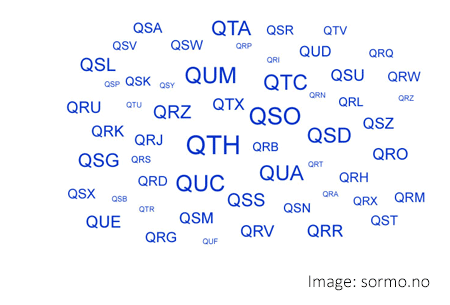This is a free fortnightly newsletter about the New Zealand Net.
If you would like to be notified by email when a new edition is published, please subscribe here.
Browse our Newsletter Archive and List of Net Tips.
Featured key

Belarus electronic keyer with single lever
This single-lever electonic keyer comes from Belarus where it has been a favourite of HST (high-speed telegraphy) competitors.
The photo was posted recently to the Facebook group CW Bugs, Keys & Paddles with a request for information. Some of the replies:
- Belarusian key nicknamed the “Bindasov”. Impossible to get now because the manufacturer died a few years ago and they keep the manufactured copies for themselves. Back in the day, when they were for sale, they went for only about $80.
- This is a Belarusian single-lever key used for HST racing with an integrated keyer. The one in the photo with the potentiometers is the most recent model. I believe it’s hard to find in old continent and could be worth at least $200.
The video later in this newsletter shows youngsters training on similar keyers.
Quick notes
 What is it? You can order the item pictured here from a commercial seller on Trade Me. But what on earth is it? The description reads: “Robotime ROKR Morse Telegraph Mechanical 3D Puzzle CGM02. Create and decode messages with the ROKR Morse Telegraph, a working mechanical machine that transmits messages through gears, lights, and real clicking keys.” There’s more description, but none of it makes sense to me. Anyone familiar with this thing?
What is it? You can order the item pictured here from a commercial seller on Trade Me. But what on earth is it? The description reads: “Robotime ROKR Morse Telegraph Mechanical 3D Puzzle CGM02. Create and decode messages with the ROKR Morse Telegraph, a working mechanical machine that transmits messages through gears, lights, and real clicking keys.” There’s more description, but none of it makes sense to me. Anyone familiar with this thing?
Straight Key Night fast approaching. The next SKN will be on Sunday 7 December, 0800-0900 UTC on 80 metres. Please encourage any CW ops you know, including beginners, to get involved. Details here.
RSN versus RST. An amateur asked me recently how they could start using RSN for signal reports. After I had answered them, I decided to turn my suggestions into an article so that any ham could refer to it.
HX codes updated. Traffic handlers will want to grab a copy of the newly updated HX codes (message handling instructions) which have been jointly produced by Radio Relay International and the ARRL National Traffic System.
Latest QNI magazine. The final issue of QNI for 2025 is another great effort by James WB8SIW with numerous interesting articles.
Meeting in Morrinsville
 Grant ZL2GD (pictured on the right) has been spotted far from his home in the central South Island on a visit to Morrinsville where he called on fellow NZ Net member Stephen ZL1ANY.
Grant ZL2GD (pictured on the right) has been spotted far from his home in the central South Island on a visit to Morrinsville where he called on fellow NZ Net member Stephen ZL1ANY.
Photo flashback

Video: HST school in Mogilev (Belarus)
Does the positioning of the keyer, parallel to the front of the desk, help these operators reach their impressive speeds?
Net tip: QNY
We continue our look at Q signals with QNY.
It means: “Shift to another frequency, or to … kHz, to clear traffic with … “
This one is used a lot on NZ Net, but not always as efficiently as it could be. Why do I say that?
Notice that the signal says nothing about who will send and who will receive. It simply says “clear traffic with…” so it can be directed to either station.
Here’s an example of QNY being used efficiently:
- ZL1ANY lists traffic for ZL1PX.
- ZL1PX checks in QRU.
- Net Control acknowledges 1PX and adds “QNY U5 ZL1ANY”.
- ZL1PX sends R, ZL1ANY sends R, and away they go.
So, there is no reason for Net Control to ask 1PX to wait while they call 1ANY to start the QNY process.
This speeds up the net, although it does mean stations checking in need to pay attention, but that’s part of the fun, right? 🙂
The A-Z of Q Signals

A well-run CW net is a lovely thing to experience. Communication between stations is quick and concise, and the net business is conducted with minimal time wasted.
As CW operators, we have many techniques to communicate quickly and efficiently. And if we know and use these techniques, we can often match or exceed the speed and accuracy of voice communication.
One of our most important tools is the set of Q Signals (or Q Codes), and in this series we look at the “essential” ones, in alphabetical order.
Advertising archive

1962
Suggestions?
If you have suggestions on how to make the NZ Net better, or things you’d like to see covered in these newsletters, please contact ZL1NZ. Articles and photos will be gratefully received!
Thanks for reading, and I hope to hear you soon on the NZ Net!
—
Neil Sanderson ZL1NZ, Net Manager
New Zealand Net (NZ NET)


